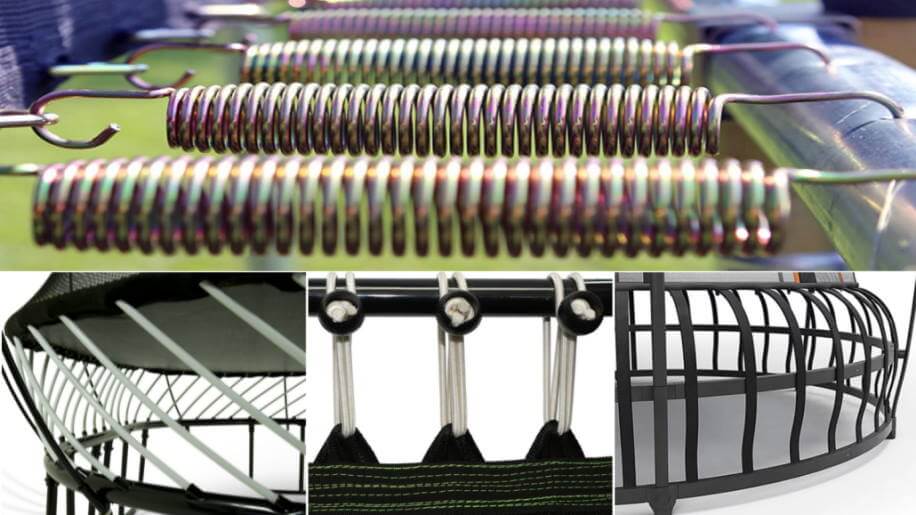New Trampoline Springs – For Extreme Bounce
Trampoline springs can be made from several materials, from steel to electric straps or even fiberglass. Springs are usually made from galvanized wire and ideally will conform to ASTM (American Society for Testing and Material standards) before being sold on the market.
Because the bounce of the trampoline depends upon the resilience of the springs, they should be strong enough to bear the trampoline user’s weight and then quickly rebound to their original position. Basically, the springs are what matters for jump height – based on two laws of physics:
- Robert Hooke’s Law of Elasticity: The force required to extend a spring is proportional to the length of the extension,
- Isaac Newton’s Third Law of Motion: For every action, there is an equal and opposite reaction. When you jump down on the trampoline, the springs are pushing back an equal and opposite reaction – you bounce back into the air.
There are 3 main types of springs being used, with several variations
1. Steel springs on regular trampolines; variation of it on Vuly trampolines (Leaf springs – Chromate conversion coated steel), The springs initially start as a piece of strengthened wire that is then coiled and cut to a trampoline manufacturer’s exact specifications. Only the highest quality wires should be used in this process for obvious reasons.
2. Bungee rope springs – mostly found on mini trampolines, but some models of round trampolines also use them,
3. Fiber rods – in Springfree trampolines.
Whatever material or design is used, the springs must be strong. Otherwise, the springs will not provide enough bounce to propel the jumper into the air, and, the springs could fail entirely, creating a safety hazard.
When it comes to trampoline springs, one general rule can be applied – longer springs, higher bounce!
What Are Spring-based Trampolines?
Spring-based trampolines are exactly what the name says – trampolines based on galvanized metal springs. They maybe are not as safe as spring-free trampolines but for a price several times lower this is not their main requirement. If we are concerned about the safety of jumpers then we have a lot of other elements to watch on, like trampoline jumping mat (we don’t want holes), spring pads, enclosure, and last – education of trampoline jumpers, as rules for staying safe must be known!
Spring-based trampolines can come in several shapes – round, oval, and rectangular in many common sizes. In all of them, there is a big difference in experiencing the bounce.
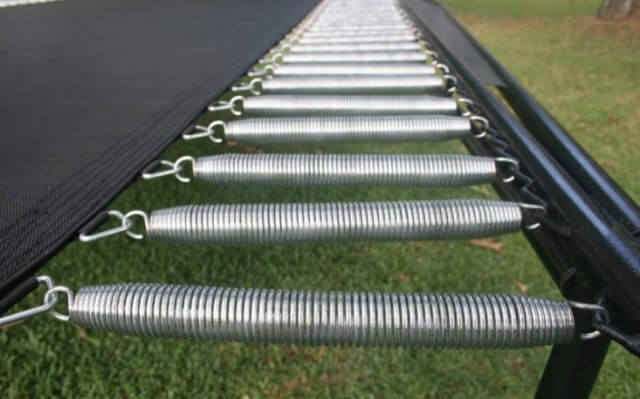
Why are trampoline springs important?
Each bounce on the trampoline stresses not just the trampoline mat, but also the springs. This is why strong galvanized material like steel should be used for your springs.
Each season springs should be tested to check their condition as it can be really unsafe to jump on a trampoline that does not have well-maintained springs. In case you find them rusty or stretched, you need to replace them before jumping. To keep your springs last longer and working fine, you can cover the entire trampoline set up with a cover if it is not in use and should also try spraying the metal with some anti-rust product.
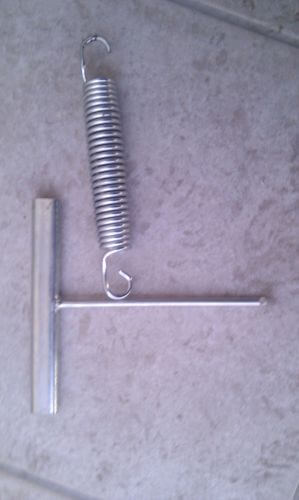
The bounce in your trampoline depends on two major factors.
- One is a mat, as a centerpiece of the trampoline, but more important are the springs around the edge,
- The quality and length of springs will directly affect the height of the bounce.
The springs initially start as a piece of strengthened wire that is then coiled and cut to a trampoline or spring manufacturer’s exact specification. Only the highest quality wires should be used in this process for obvious reasons.
As the years go by your trampoline springs will become weakened and stretched. The bounce in your trampoline will be affected by this as well, potentially, your safety. Periodic checks should be made on your trampoline springs to ensure they’re still in good condition and not corroded.
Protecting your trampoline with a tarp can help prevent this as can treating the springs with something like WD-40 which will protect them from the rain and cold weather. Combining a tarp with an anti-rust treatment like WD-40 is even better because it prevents any rust from forming and keeps the springs in good condition – regardless of the weather.
Which brands to buy?
What brand names should you look for? Well, if it’s possible try to get replacement parts from your trampoline brand, as those will be optimized for your trampoline, in terms of spring preload in N. If not possible, then measure them and buy replacements from any brand of the same size. You should find either of these available online when you need to go shopping.
How do you know what size springs you’ll need? That’s easy enough – take a spring off of the trampoline and measure it from hook to hook to get the size (measured in inches) that you’ll need. Take your time making these measurements and be as exact as you can.
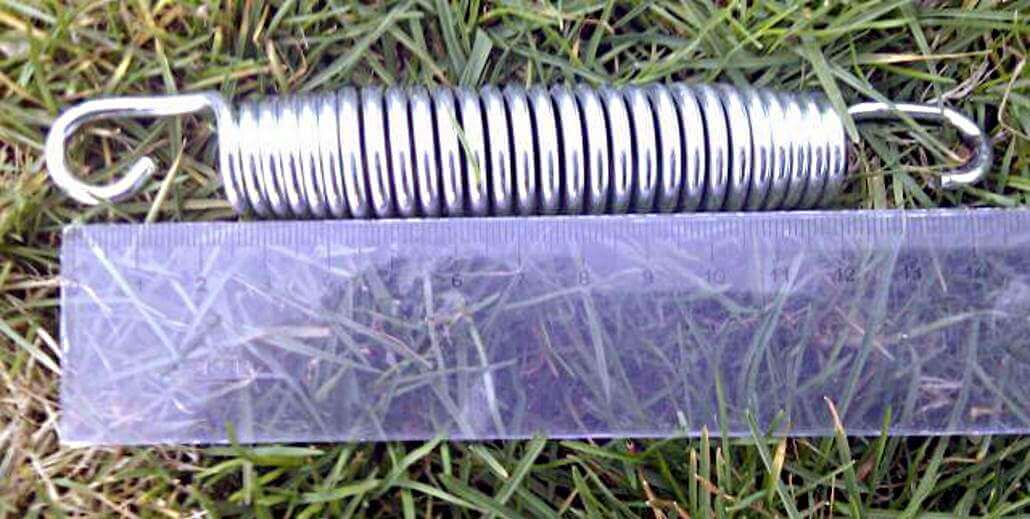
Where can you buy trampoline replacement springs?
Trampoline Parts and Supply have a wide range of springs for sale and offer very good value for money – they also offer free shipping on a range of items which is another plus in their favor. Never forget eBay is always a good source for any kind of item you might want. Trampoline springs can be bought individually or in packs with prices ranging from about $1 per spring to about $60 for a pack of 48. The final price will of course depend on the quantity and quality of the springs purchased. Check out their online store today.
Trampoline Springs – No.1 replacement part you should have
Trampoline springs are parts you should have on hand at home. You can buy them used if you like but this is NOT recommended as you have no idea if they are good or not. So, it is better to find discounts on the Internet on new springs. You can take a look at it on Amazon or on Google.
Springs need to remain strong and stiff. Remember the longer the springs are the better and higher bounce you will get too. Also, if you have already bought some kind of cheap trampoline where springs are not so good, you can always upgrade them to really good ones. Trampolining is all about the bounce and the springs are responsible for it. Be sure you buy really good ones when you stock up on replacement parts.
Types of trampoline springs:
1. Competitive springs
These types of springs for the trampoline are widely used on competition-grade trampolines (like Euro tramp Ultimate 4×4 or MaxAir Trampolines). These are heavy-duty springs, usually longer than 10″, and do come with a price. Of course, they last longer so you don’t have to replace them more often, so we can recommend them if money is not the issue (price per piece is approx $6).
2. Recreational steel springs
These types of trampoline springs are commonly used in 95% of all outdoor trampolines. This type is cheaper when compared to the competitive ones and because it is cheaper, it definitely doesn’t last as long.
When replacing your trampoline mat, it is a good time to inspect springs as well. You should try to jump on a trampoline and if you notice springs that are over-stretched, loose, or have damaged hooks, basically they are not returning to their initial position, then they should be replaced immediately, as not only quality of bounce will suffer, but they do pose a safety hazard.
3. Steel Leaf springs (found on Vuly trampolines)
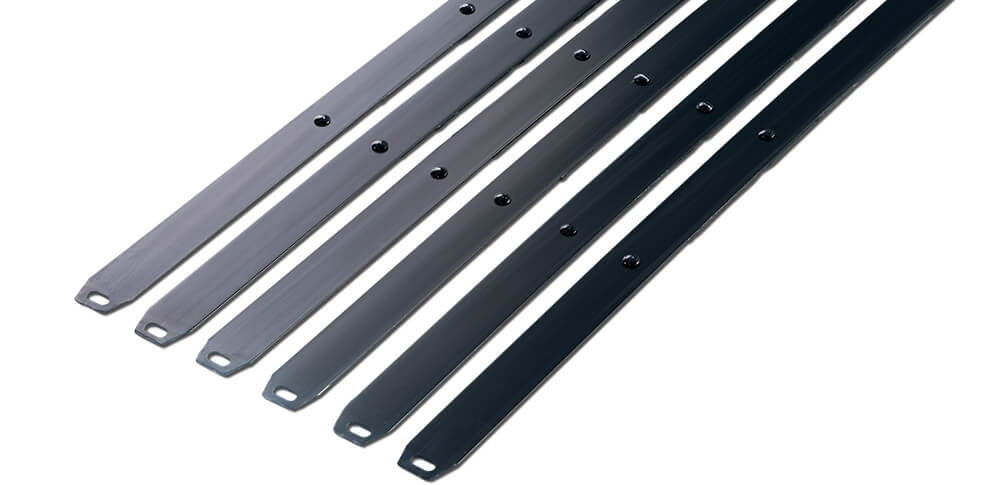
4. Composite rods (found on Springfree Inc. trampolines)
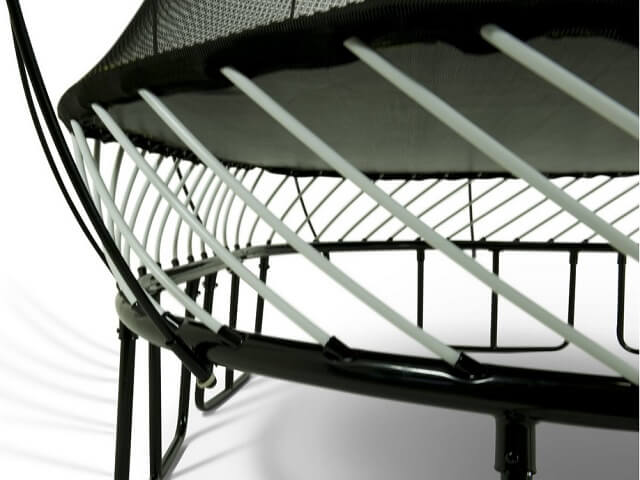
Trampoline springs mostly come in these lengths:
- 3.5″ Trampoline Springs
- 4.75″ Springs
- 5.5″ Springs
- 6.5″ Trampoline Springs
- 7″ Springs
- 8.5″ Springs
- 9″ Trampoline Springs
- 10″ Springs

